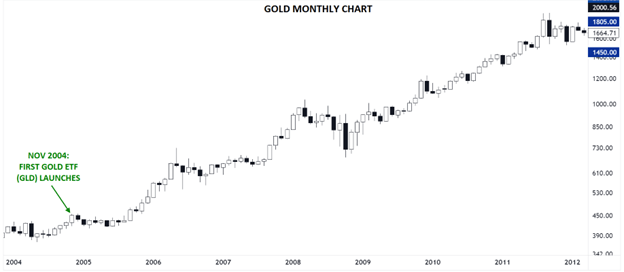Bitcoin Tests 47K Ahead of Likely Bitcoin ETF Approval: How to Trade It
Forex.com | Jan 09, 2024 01:53AM ET
- The SEC and major investment firms appear prepared for Bitcoin ETFs to be approved later this week.
- Spot ETFs will be required to buy and hold underlying Bitcoin equal to their underlying assets, fundamentally altering Bitcoin’s supply-demand balance.
- BTC/USD is poised to close near $47K, at its highest level since April 2022, after consolidating in a high base formation over the last five weeks will traders “sell the news”?
After years of waiting, Bitcoin finally appears on track to see a “physical” ETF approved in the US.
For the uninitiated, trillions of dollars in institutional and retirement assets can only invest in regulated financial assets, a situation that has hampered the adoption of Bitcoin as an investable asset in the world’s richest economy.
The US Securities and Exchange Commission (SEC) has a backlog of more than a dozen Bitcoin ETF applications that it must make a final decision on soon, starting with ARK’s application deadline on January 10th.
After a string of embarrassing legal losses for its “arbitrary and capricious” discrimination against crypto assets, analysts almost unanimously expect the SEC to approve multiple (if not all) of these applications imminently, making Bitcoin far more accessible for many investors.
Indeed, Gary Gensler, the head of the SEC, made a Twitter thread earlier today with “Some things to keep in mind if you’re considering investing in crypto assets,” suggesting that he’s trying to get out ahead of the approval.
Meanwhile, multiple investment firms with outstanding ETF applications announced expense ratios for their proposed ETFs, generally ranging in the 0.2-0.5% range, which is relatively cheap for exposure to an alternative asset class.
Crucially, unlike past high-profile, derivative-based Bitcoin product launches, like futures contracts or futures-based ETFs, spot ETFs will be required to buy and hold underlying Bitcoin equal to their underlying assets, fundamentally altering Bitcoin’s supply-demand balance.
While the situation is not necessarily identical, the launch of the first gold ETF (GLD (NYSE:GLD)) back in November 2004 may provide an interesting context. For the first time, there was an easy, liquid way for Americans to invest in the precious metal en masse and investors poured funds into the ETF for its purported diversification from their more traditional assets, contributing to gold’s big rally from below $500 to nearly $2,000 over the next eight years:

Source: TradingView, StoneX
Bitcoin Technical Analysis – BTC/USD Daily Chart

Source: TradingView, StoneX
As the chart above shows, traders are clearly “buying the rumor” when it comes to a Bitcoin ETF approval this week; the key question is whether they’ll “sell the news” once the ETFs are formally approved. The cryptocurrency is poised to close near $47K, at its highest level since April 2022, after consolidating in a high base formation over the last five weeks.
From a purely technical perspective, the trend remains clearly to the topside, with room up toward previous resistance and the 61.8% retracement of the 2021-2022 drop in the $48,400-500 range. That said, we wouldn’t be surprised to see a short-term “sell the news” reaction emerge after the big anticipatory run up. In that scenario, a pullback toward the 50-day EMA in the $41K area could be in play, but as long as the ETF’s are attracting assets, dips may be relatively limited in the short term.
Original Post
Trading in financial instruments and/or cryptocurrencies involves high risks including the risk of losing some, or all, of your investment amount, and may not be suitable for all investors. Prices of cryptocurrencies are extremely volatile and may be affected by external factors such as financial, regulatory or political events. Trading on margin increases the financial risks.
Before deciding to trade in financial instrument or cryptocurrencies you should be fully informed of the risks and costs associated with trading the financial markets, carefully consider your investment objectives, level of experience, and risk appetite, and seek professional advice where needed.
Fusion Media would like to remind you that the data contained in this website is not necessarily real-time nor accurate. The data and prices on the website are not necessarily provided by any market or exchange, but may be provided by market makers, and so prices may not be accurate and may differ from the actual price at any given market, meaning prices are indicative and not appropriate for trading purposes. Fusion Media and any provider of the data contained in this website will not accept liability for any loss or damage as a result of your trading, or your reliance on the information contained within this website.
It is prohibited to use, store, reproduce, display, modify, transmit or distribute the data contained in this website without the explicit prior written permission of Fusion Media and/or the data provider. All intellectual property rights are reserved by the providers and/or the exchange providing the data contained in this website.
Fusion Media may be compensated by the advertisers that appear on the website, based on your interaction with the advertisements or advertisers.